Wednesday, 26 April 2017
| Room 310 |
08:15 - 10:15 |
Moderators: Eric Achten, Linda Knutsson |
Slack Channel: #s_contrastmechanisms
Session Number: O54
08:15
 |
0675.
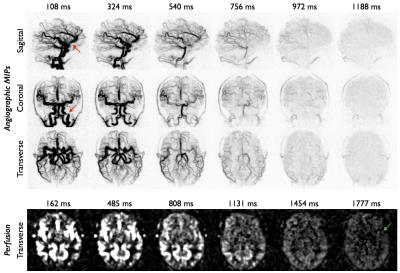 |
4D Combined Angiography and Perfusion using Radial Imaging and Arterial Spin Labeling 
Thomas Okell
Complete assessment of blood flow to the brain requires both knowledge of blood flow through the large arteries and perfusion at the tissue level. However, separate acquisition of dynamic angiograms and perfusion maps is time-consuming. In this work a 4D implementation of the Combined Angiography and Perfusion using Radial Imaging and Arterial Spin Labeling (CAPRIA) sequence is presented, allowing the reconstruction of whole-brain dynamic angiograms and time-resolved perfusion maps from the same raw data set. In addition, a variable flip angle imaging scheme is shown to benefit the visualization of tissue perfusion without compromising angiographic image quality.
|
08:27
 |
0676.
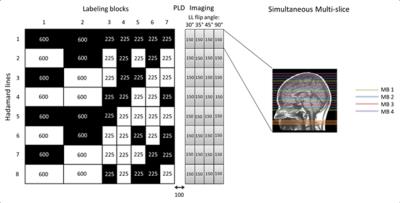 |
More and faster: multi-timepoint ASL at 150ms time-resolution with whole brain coverage by combining time-encoding, Look-Locker, Multi-Band and flip-angle sweep 
Merlijn van der Plas, Wouter Teeuwisse, Sophie Schmid, Matthias van Osch
Multi-timepoint ASL can be acquired with several methods; however, most of these methods have some confounding aspects, such as loss of temporal resolution or limited brain coverage. We combine Hadamard-8 time-encoded-pCASL with Look-Locker readout (4 phases×150ms) for a high temporal resolution; moreover, multiband-factor 4 is used for a time efficient acquisition manner enabling whole brain coverage. This combination of techniques results in 25 PLDs for 16 slices, which provides information about the inflow of labeled blood and tissue perfusion. These images have a temporal resolution of 150ms, whereas inflow of label is measured at 75ms resolution.
|
08:39
|
0677.
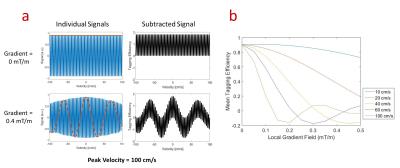 |
Evaluation of Velocity Selective ASL Tagging Efficiency Utilizing Accelerated 3D Angiography 
James Holmes, Tilman Schubert, Prateek Sanan, Patrick Turski, Kevin Johnson
Velocity Selective Arterial Spin Labeling (VS-ASL) has been suggested as a possible solution for evaluating perfusion and MRA in complex geometries without well-defined labeling planes as well as in cases of slow or complex flow patterns. The goal of this work is to assess the spatial distribution of VS-ASL tagging efficiency utilizing MR angiography. Specifically, we identify and characterize errors introduced by susceptibility induced magnetic gradients. In controlled phantom experiments and human subjects tagging efficiency demonstrated dependence both on the magnitude of susceptibility shift and the velocity of vessels flowing through those regions.
|
08:51
|
0678.
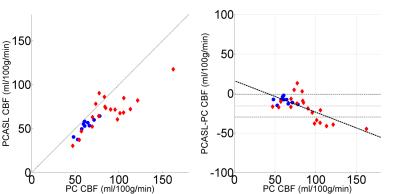 |
Pseudo Continuous Arterial Spin Labeling Quantification Considerations in Hyperemic Cerebral Blood Flow 
Adam Bush, Thomas Coates, John Wood
In this work we compare 2D phase contrast (PC) and pseudo continuous arterial spin labeling (PCASL) estimates in subjects with hyperemic cerebral blood flow. We found that B1 ineffiency dependent reductions in labeling efficiency and venous outflow of ASL tracer in PCASL leads to underestimation of PC CBF estimates.
|
09:03
|
0679.
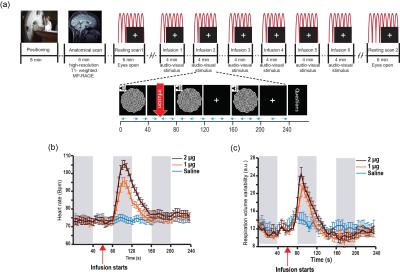 |
Cardiorespiratory noise correction improves the ASL signal 
Mahlega Hassanpour, Qingfei Luo, W. Kyle Simmons, Justin Feinstein, Martin Paulus, Wenming Luh, Jerzy Bodurka, Sahib Khalsa
The use of ASL fMRI to study brain function is constrained by its low signal-to-noise ratio and large temporal signal variations. We evaluated the influence of cardiorespiratory activity on the amount of variance in resting state and task based ASL data via several different physiological noise models. We further tested the utility of physiological noise correction approaches by pharmacologically inducing cardiorespiratory fluctuations and evaluating for improvements in the ASL signal. We found that regressing out these non-neuronal, cardiorespiratory-related signal variations substantially improved the ASL signal, offering an important advance for quantitative studies of cognitive processes.
|
09:15
|
0680.
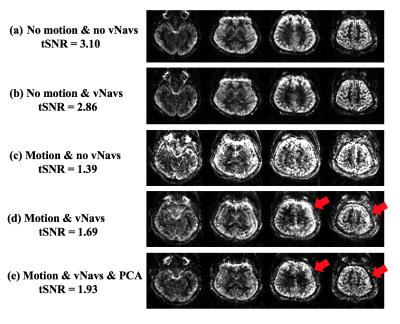 |
Prospective motion correction for 3D GRASE pCASL with volumetric navigators 
Xingfeng Shao, M. Dylan Tisdall, Danny JJ Wang, Andre Jan Willem van der Kouwe
We propose a prospective motion correction approach for background suppressed (BS) segmented 3D GRASE pCASL using volumetric EPI-based navigators (vNavs), which causes minimal contrast change and no extra time. vNavs reduced motion artifacts effectively and increased temporal signal-to-noise ratio (t-SNR). Principle component analysis (PCA) is able to further reduce residual motion artifacts and restore the details of gyral structure in perfusion weighted images.
|
09:27
|
0681.
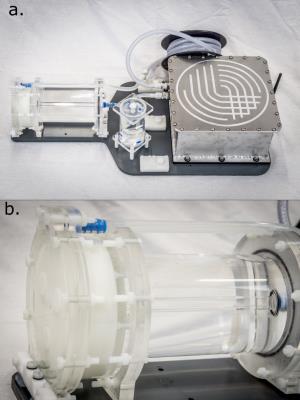 |
A Calibrated Perfusion Phantom for Quality Assurance of Quantitative Arterial Spin Labelling. 
Aaron Oliver-Taylor, Miguel Gonçalves, Thomas Hampshire, Bradley Davis, Pankaj Daga, Laura Evans, Alan Bainbridge, Claudia Wheeler-Kingshott, Magdalena Sokolska, John Thornton, Enrico De Vita, Xavier Golay
Arterial Spin Labelling shows great promise for perfusion measurements, however its clinical adoption is precluded by the lack of a standardised phantom to validate such measurements. A perfusion phantom specially designed and built for optimal use with clinical ASL sequences is presented, alongside characterisation results. Measurements of perfusion rate and arterial transit time were made using a multi-TI FAIR PASL sequence. Results indicate the phantom has good stability, high SNR and exhibits perfusion rates and arterial transit times that are comparable with human physiology.
|
09:39
|
0682.
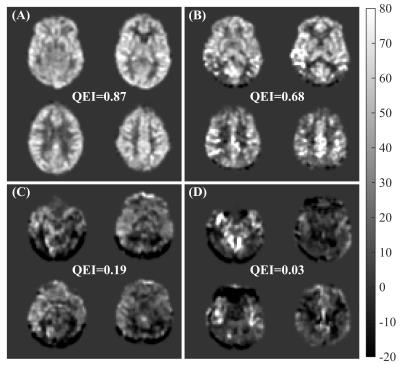 |
Automated Quality Evaluation Index for 2D ASL CBF Maps 
Sudipto Dolui, Ronald Wolf, Seyed Ali Nabavizadeh, David Wolk, John Detre
We propose an automated Quality Evaluation Index (QEI) for evaluating the quality of cerebral blood flow (CBF) maps obtained using arterial spin labeling (ASL). Agreement between the proposed QEI and human ratings was comparable to that between human ratings. Poor quality CBF maps as assessed by QEI significantly correlated with lower test-retest reliability of mean CBF in different regions of interest for elderly control subjects. The proposed QEI can potentially be used in large-scale studies to automatically identify and discard degraded data from analysis, thereby reducing human effort and potential user bias.
|
09:51
 |
0683.
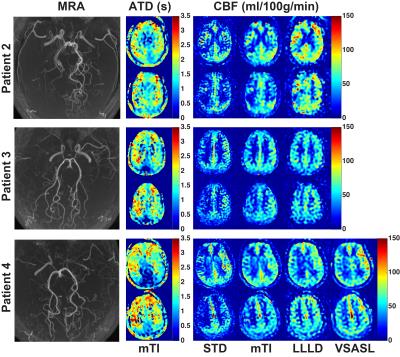 |
Extreme ASL: Challenges and Solutions to Improve Perfusion Imaging in Patients with Markedly Prolonged Arterial Transit Delays 
Jia Guo, Audrey Fan, Marc Lebel, Samantha Holdsworth, Ajit shankaranarayanan, Greg Zaharchuk
It is known that if labeling parameters are not properly adjusted in the presence of prolonged arterial transit delays (ATDs), perfusion may be underestimated using arterial spin labeling (ASL), yielding false negatives and possibly unnecessary interventions. In this study we evaluate the cases where the prolonged ATDs due to cerebrovascular disease posed challenges to perfusion quantification using ASL. Some possible solutions, which we term ‘extreme ASL’, were explored and discussed.
|
10:03
 |
0684.
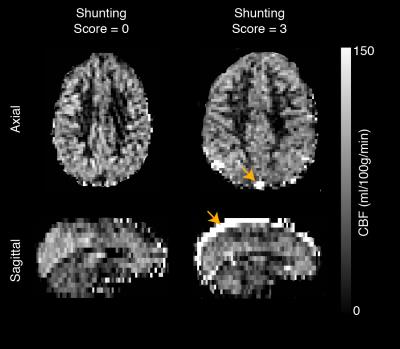 |
Evidence of arteriovenous shunting in arterial spin labeling MRI in adults with sickle cell anemia 
Meher Juttukonda, Manus Donahue, Melissa Gindville, Jeroen Hendrikse, Lori Jordan
High cervical arterial flow velocity may cause rapid erythrocyte transit through cerebral capillaries resulting in arteriovenous shunting, which may present as hyperintensities in pseudo-continuous arterial spin labeling (pCASL) MR difference images in draining veins. In an analysis of 36 adults with sickle cell anemia (SCA) and 11 age-matched controls, hyperintense superior sagittal sinus pCASL signal was present in 9% of controls and 61% of patients and correlated with elevated flow velocities. This shunting effect also trended with other markers of hemo-metabolic impairment in patients, such as elevated oxygen extraction fraction, elevated cerebral blood flow, and decreased blood hematocrit.
|
|












